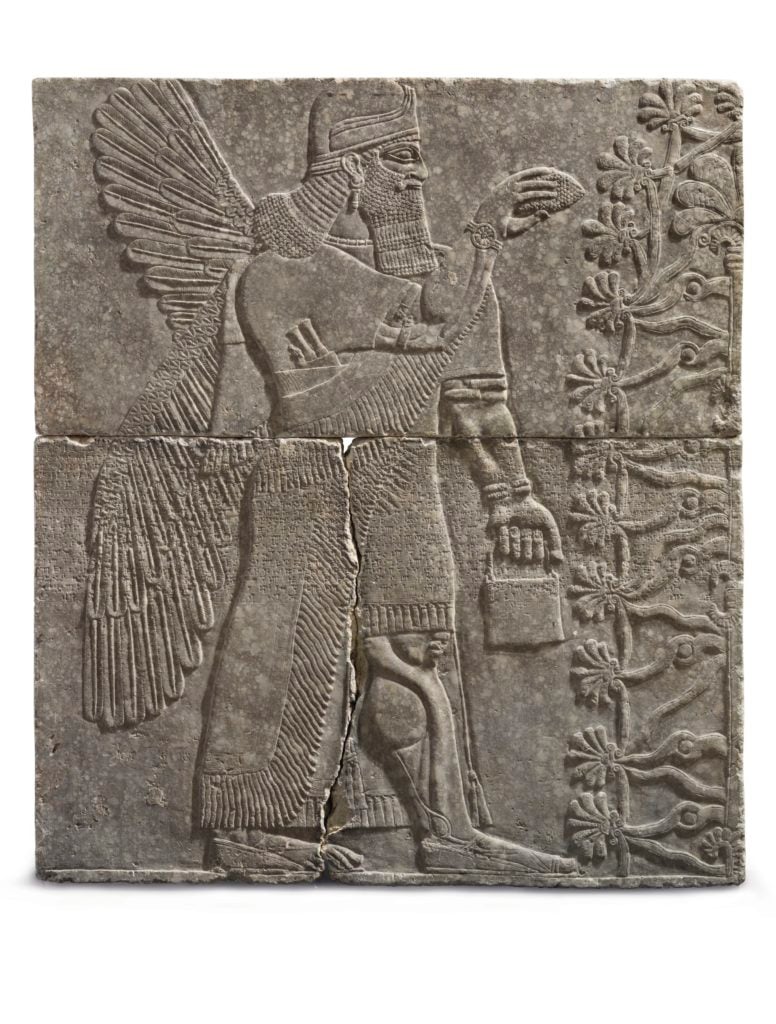Auctions
A 3,000-Year-Old Stone Relief Sold for $31 Million at Christie’s, Setting a New Record for Assyrian Art
The auction house is pushing back against Iraq's demands for repatriation.

The auction house is pushing back against Iraq's demands for repatriation.

Henri Neuendorf

A rare, 3,000-year-old Assyrian relief sold for $31 million at Christie’s antiquities auction in New York on Wednesday, tripling its pre-sale estimate of $10 million and setting a new auction record for Assyrian art.
The seven-foot-tall gypsum slab, featuring the image of a deity carved into the surface, is one of the finest examples of ancient Assyrian art to come to the market in decades, Christie’s claimed in the lead-up to the sale. It was unearthed by the British archaeologist Sir Austen Henry Layard between 1845 and 1851 from a site near the ruins of the Northwest Palace, in the ancient city of Nimrud, in what is now Iraq.
The work is one of three carved gypsum slabs that was sold to an American missionary, who gave them to the Virginia Theological Seminary in Alexandria, Virginia, in 1859. The work was most recently on display in the seminary library until a 2017 audit revealed their value, according to CNN. That led the seminary to put one of the slabs on the market in order to cover the cost of the increased insurance premiums of the remaining two pieces, and to support the seminary’s scholarship fund.
The publicity generated by the sale prompted the Iraqi Ministry of Culture to call for the repatriation of the panel.
A Christie’s spokesperson said in a statement that the house is “sensitive to claims for restitution by source countries,” but that there was no legal basis for repatriation in this case. “Given the full provenance, history and 1860 entry of this work into the United States, the authorities confirmed the object’s documentation well meets all applicable laws governing its sale.”
Amid a flood of looted antiquities on the market in the aftermath ISIS’s plundering of archaeological sites in the region, collectors seem to be far more willing to pay a premium for artifacts with a clear provenance.
In the catalogue entry for the artifact on Christie’s website, the auction house notes that the excavation was sanctioned by the Grand Vizier of the Ottoman Sultan in the 19th century, and cited a number of academic texts on the subject.